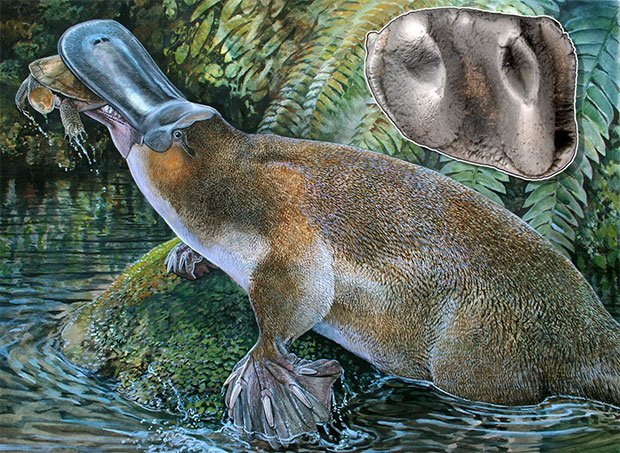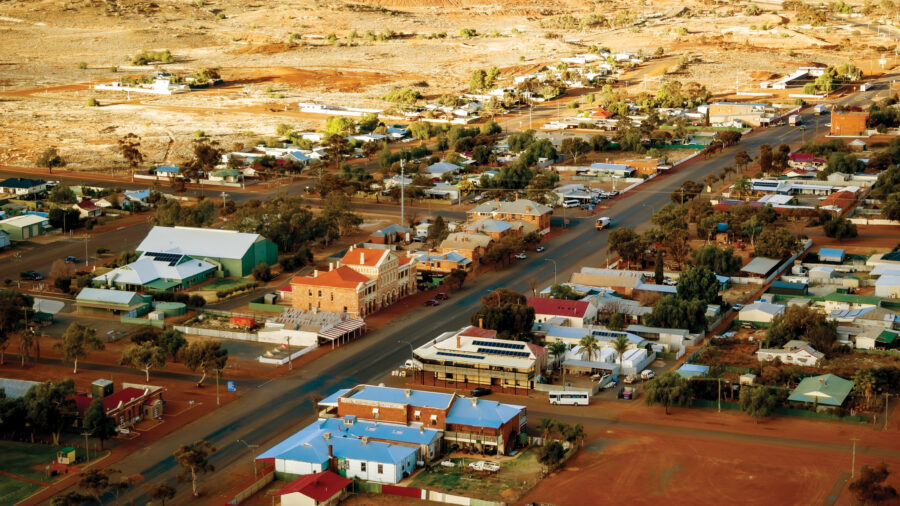Giant platypus had taste for meat

A GIANT SPECIES OF extinct platypus that had powerful teeth has been found at Queensland’s Riversleigh World Heritage Area fossil site.
Researchers led by Professor Mike Archer at the University of New South Wales (UNSW) in Sydney believe the metre-long animal used its teeth to prey on turtles, frogs and fish.
Today’s platypus is around half that length and does not have teeth as an adult, instead relying on horny pads in its bill to crunch up yabbies, shrimp and other invertebrates.
“Discovery of this new species was a shock to us because prior to this, the fossil record suggested that the evolutionary tree of platypuses was relatively linear,” says Mike. “Now we realise that there were unanticipated side-branches on this tree, some of which became gigantic.”
Platyzilla is king of the fossils
Former UNSW student Rebecca Pain, now a doctoral candidate at Columbia University in New York City, USA, discovered a fossil tooth in 2012. The size and eating habits of the new species, named Obdurodon tharalkooschild, were later determined from a detailed study of the size, shape and function of the tooth.
“Monotremes [platypuses and echidnas] are the last remnant of an ancient radiation of mammals unique to the southern continents,” says Rebecca, who is the lead author of a study on the find, published today in the Journal of Vertebrate Palaeontology.
“A new platypus species, even one that is highly incomplete, is a very important aid in developing understanding about these fascinating mammals.”
The experts believe that, similarly to the modern platypus, the fossil species was an aquatic animal that inhabited pools and rivers in the rainforests that covered the Riversleigh region millions of years ago.
The oldest evidence for ancestors of the platypus in Australia is the 26-million year-old fossil of a smaller species, Obdurodon insignis, found in the Simpson Desert. The fossil record of the platypus group extends back 61 million years in South America.
RELATED STORIES




